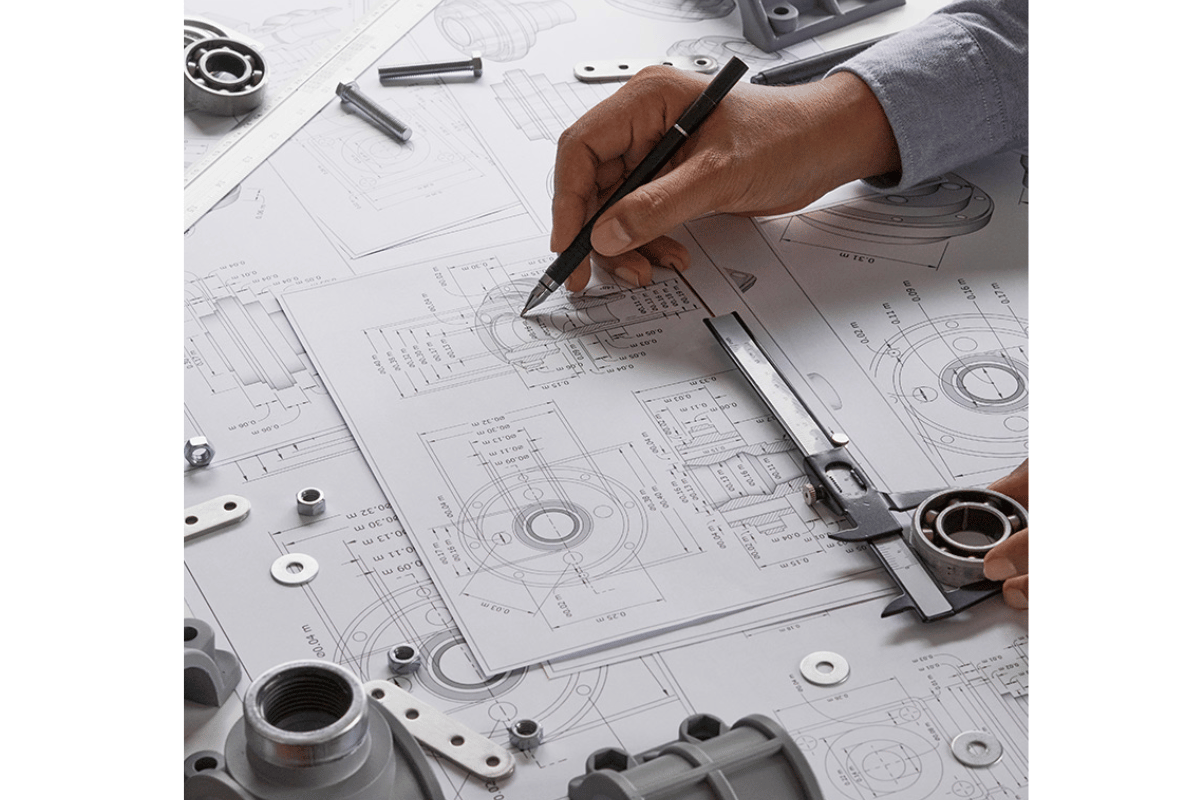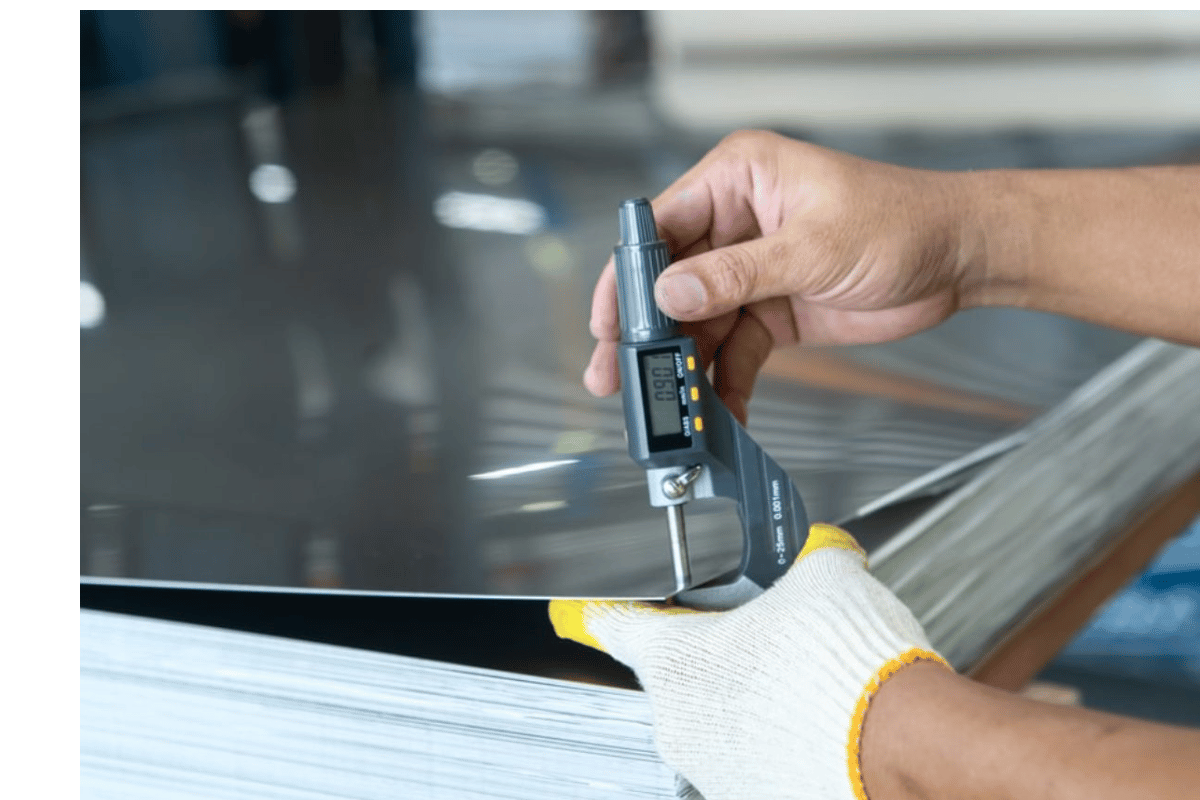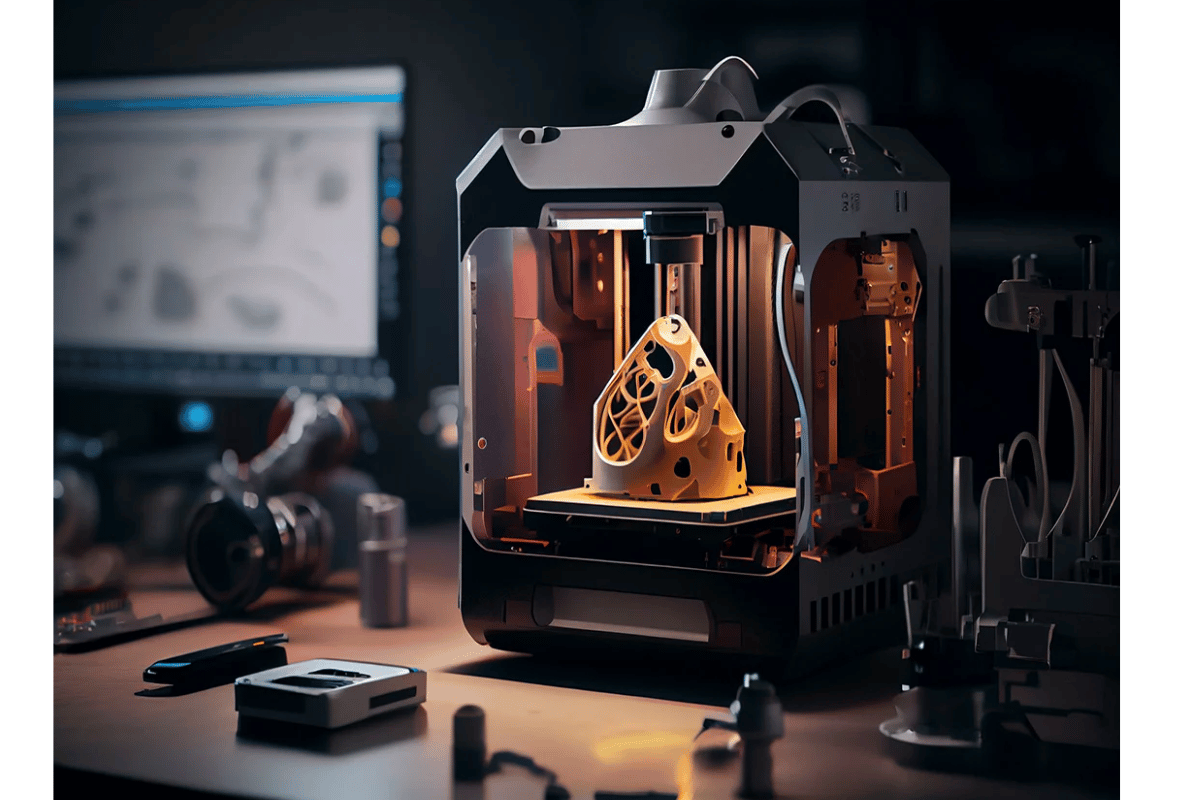The manufacturing business is built upon metal machining processes which enable the accurate shaping and forming of metallic components used in many products found in different sectors. This blog is intended to introduce readers to all standards of these activities from the introductory to the complex ones. Whether you are a seasoned professional or an amateur interested in machining, you will find this guide helpful as it outlines various machine processing techniques, including tools used and materials involved that affect efficiency and quality of machining operations. Upon reading this article, individuals will have laid a good foundation in metal machining processes thereby appreciating intricacies and applications of contemporary production method’s indispensable feature.
What Is Metal Machining?
What is Metal Machining?
Metal machining is the process of removing material from a workpiece to accomplish desired shape, size, or finish. This practice is normally performed by using different machine tools like lathes, milling machines, and drill presses which cut, grind or etch metal through controlled removal of materials. The ultimate goal of metal machining is to make exact and precise components that satisfy particular design criteria.
Purpose and Applications
Metal machining serves different vital purposes because it is a basic manufacturing operation. Its primary purpose involves production of accurate parts having specific sizes, shapes, and finishes which are required in numerous products as well as industries. There are no variations in accuracy needed when it comes to precision-made metal items; they are essential in every area from automotive to aerospace industry right up to surgical instruments for medical use and consumer electronics for domestic appliances. This approach entails the manufacture of intricate machine components and even surgical tools that require extreme precision. This step guarantees not only good working order and reliability of finished goods but also enhances overall efficiency and effectiveness in multiple industries as such.
Common Metal Machining Techniques
Roulette
This is a process of removing material from the surface of an object with rotating tool. It actually has to do with parts like pins and shafts that are generally cylindrical where production is done on the lathe. The cutting conditions for turning comprise spindle speed, feed rate, and depth of cut which are selected carefully based on the work piece material and desired finish.
Milling
It refers to using rotary cutter to remove material by moving cutter towards work piece. This operation can produce shapes like holes and slots. CRITICAL milling parameters include spindle speed, feed rate, and cut depth. They have direct impact on surface quality and dimensional accuracy.
Drilling
This is when you make round holes in a workpiece with a spinning drill bit. These drilling details comprise drill speed, feed rate, and drill diameter that are used in both manufacturing operations as well as maintenance activities. Hole accuracy as well as finish depend on these parameters besides upon the drilled materials themselves.
Grinding
Here, small amounts of material are removed by an abrasive wheel for ultra-precision finishing purposes. It finds use in parts that require tight tolerances or smooth surfaces such as bearings or turbines.“Wheel Speed”, “Feed Rate” & “Depth of Cut” are critical grinding factors influencing surface finish & MRR (material removal rate).
Broaching
In broaching, a broach (a toothed tool) is utilized so as to get rid of unwanted materials from surfaces…………… Such types include keyways among other complicated configurations.. Broaching input variables encompass but aren’t limited to broach speed/feed introduced into a given work specimen characterized by its own geometry or/and mechanical properties.
If manufacturers gain mastery over these processes through their respective parameters then they will be able to achieve high precision levels while producing parts for application in multiple areas at once.
How Does a CNC Machine Work in Metal Machining?

CNC Machining Basics
This is a machining technique that uses computer software that has been programmed in advance to operate machine tools and equipment. In this case, the CNC system reads out digital design which is usually created by the use of CAD (Computer-Aided Design) software and then converts it into actual movements of the machine. To do metal machining, cutters are guided in their position and speed so as to shape a piece precisely. The components of a CNC machine including MCU (Machine Control Unit), drive systems, and feedback systems collaborate to achieve very high precision levels with low variations from one part to another. High-speed spindles, automated tool changes, and advanced cutting strategies are common methods used to improve efficiency and productivity during metal machining.
Types of CNC Machines
There are various types of CNC machines used in metal machining:
- CNC Milling Machines: They make use of rotating cutting tools while the workpiece remains static where they can be used to cut different parts according to specific requirements.
- CNC Lathes: These machines rotate their workpieces while stationary cutting tools have an impact on them. This approach is useful for making symmetrical objects like cylinders, cones or spheres. Therefore, these lathes ensure regularity of parts produced since they repeat well hence it is indeed invaluable.
- CNC Plasma Cutters: These machines make use of plasma torches for severing through sheets made of metals such as steel. In fact, due to the extreme temperatures experienced at this point; thick or thin metallic materials can both be sliced easily using a beam that melts rather than cuts through them directly thus making it effective regarding rapid and accurate fabrication of complex designs using sheet metal.
All these machines play significant roles in contemporary metalworking activities due to their unique features that fit particular applications or materials required for processing purposes. Hence I can obtain perfect results in my manufacturing process taking into account specifics inherent in each type.
Advantages of CNC Machining
As a CNC machine user in metal machining, I find many unique advantages that distinguish this technology. Leading of all is the great magnitude of accuracy and precision it accords. This importance is of utmost value whether it is plasma cutters, lathes, or CNC milling machines that are being used to manufacture parts which require being done very precisely. Such high levels of precision result in fewer defects during production thereby reducing wastage as well as rework.
CNC machining is also highly efficient and scalable. Automation enables continuous operation with minimal human involvement thus significantly hastening the pace of production process. The ability to replicate designs using computer programming implies that I can make as many identical items as possible within a short time frame at relatively low costs.
Further, CNC machines offer other advantages such as job shop capability. I can use one setting to achieve different materials and complex geometries when necessary so that projects are quickly altered without necessarily requiring extensive tooling. This versatility has proven most beneficial today’s manufacturing needs where customized and intricate designs are on the rise.
Finally, CNC machining improves safety at work places compared to manual machining process because the risk of operator injury is very much reduced due to automated or enclosed method employed in its operations. As a result there will not only be safer working environment but also more reliable production processes.
In whole, Precision benefits Efficiency benefits UV Effects Safety benefits These concerns have resulted in the adoption of CNC systems across sectors; hence making it an important element towards modernized manufacturing practices.
What Are the Different Types of Machining Processes?
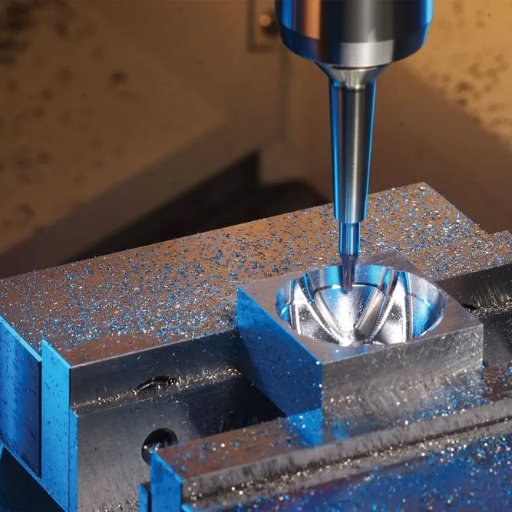
Machining Processes Overview
There are two general types of machining processes: traditional and modern. For traditional machining, it involves turning, milling, drilling and grinding that remove the material from the workpiece to achieve required size and shape. In contrast, modern methods of machining include EDM (Electrical Discharge Machining), laser cutting as well as water jet cutting which use electric discharges, lasers and pressurized water respectively to cut materials. Each technique has distinct advantages and uses thereby ensuring the right method is selected based on material properties, geometries and level of accuracy required for a particular task. Also through innovation in manufacturing technology such as CNC automation has improved this process in terms of its ability.
In Depth Analysis Of Milling
Milling is an accurate and flexible kind of machine tooling that involves removing material from the workpiece using rotating tooth like cutting tools. It is extensively used in industries mainly due to its ability to generate different shapes or profiles out of provided parts like slots or holes. In milling operations the work piece is normally attached onto a table which moves along X,Y directions meanwhile the cutter rotates itself about its axis. The combination motion between the table motion with respect to cutter rotation provides control on how much material may be removed enabling creation of complex geometry forms with fine details. Face milling where the mill cutter’s end corners perform most cutting actions while peripheral milling where mill cutter’s circumference cuts take place are some examples of types of milling that exists today .Advancements have also seen CNC (Computerized Numerically Controlled) machines being developed which enhances efficiency ,accuracy and complexity in milling .These machines are computer controlled hence they can perform very accurate tasks repeatedly hence becoming a crucial component in modern industrial manufacturing processes.
A Glimpse into Electric Discharge Machining
Electric Discharge Machining (EDM) serves as one example of highly accurate manufacturing techniques whereby electrical discharges are employed to erode work-piece materials. This is done by allowing rapid and repeated discharges to take place between an electrode and the workpiece in a controlled way. It’s mostly applicable where hard metals or those with very poor machinability are concerned. Its key advantage is that it can create intricate shapes as well as fine details with very high accuracy at low mechanical stresses on the workpiece. Modern EDM machines are usually CNC controlled hence this has resulted in better repeatability and precision within this industry making it relevant for aerospace, automotive, molding among others.
How Do You Achieve Precision in Metal Machining?
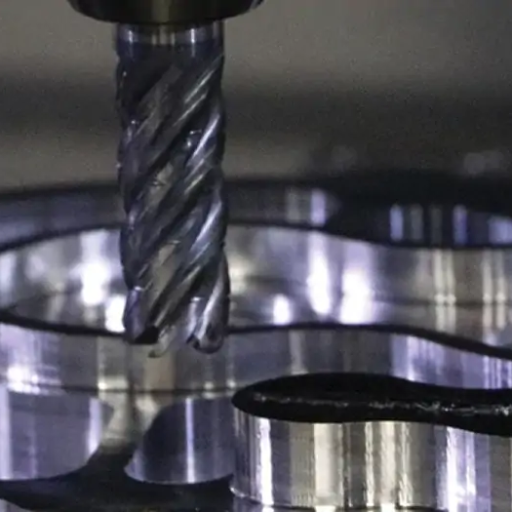
Role of Machining with Precision
For the achievement of high levels as far as accuracy in machining is concerned, precision machining plays a crucial role. This involves the application of modern tools and techniques to obtain components that have tight tolerances and fine surface finishes. In fact, CNC machines are very effective when it comes to precision machining due to their capacity of gaining meticulous control over cutting operations leading to constant or repeated results. The use of high-quality materials, precise measurement tools, and continuous monitoring of the machining process also contribute towards achieving desired precision. At the end of it all, every part undergoes precision machining so that all parts meet exact specifications necessary for the proper functioning and reliability of a final product.
Precision Tools and Techniques
Several significant tools and skills help me to secure precision in metal machining. To begin with, CNC (Computer Numerical Control) machines are inevitably used for carrying out highly accurate complex cutting operations consistently reproducible. Secondly, I use advanced measuring equipment like coordinate measuring machines (CMM) or laser scanners that ensure components conform to strict specifications completely. Another vital technique is using high-precision cutting tools made from durable materials such as carbide or diamond. Besides, regular equipment calibration and real-time monitoring during machining make it easy for detection as well as correction of deviations at their early stages. By combining these tools and techniques, I can ensure the production of high-quality parts with exceptional precision.
The Significance of Surface Finish
The functionality, performance and aesthetics are some roles that surface finish plays in machined components to achieve this goal. As a machinist, I understand that a good quality surface finish has reduced friction/wear between contacting surfaces hence prolonging component’s life span thus preventing failures that may be premature. In addition to this element; smooth surface finish enhances overall look where appearance matters in industries when selling products is needed based on looks alone. Achieving an optimal surface finish also helps in improving the fatigue resistance of parts, limiting the risk of cracks and structural weaknesses developing over time. In high-precision applications, where tolerances are tight, maintaining a consistent surface finish is essential as it can significantly influence the accuracy and reliability of the final product.
What Are the Common Metals Used in Machining?

Popular Metals and Their Properties
Milling activities usually involves different metals that have peculiar properties to be employed in diverse applications. Below are some of the frequently used metals with their key properties:
1. Aluminum
Properties: Lightweight, high strength-to-weight ratio, excellent corrosion resistance, good thermal and electrical conductivity.
Technical Parameters:
Density: 2.7 g/cm³
Tensile Strength: 70-700 MPa
Melting Point: 660.3°C
2. Steel
Properties: High tensile strength, good machinability, versatile alloying capabilities, widely available.
Technical Parameters:
Density: 7.85 g/cm³
Tensile Strength: 400-550 MPa (mild steel); up to 2000 MPa (for high-strength alloys)
Melting Point: between 1370 and 1510°C (depending on alloy composition)
3. Stainless Steel
Properties: Excellent corrosion resistance, high durability, good machinability, aesthetically appealing.
Technical Parameters:
Density: 7.75-8.1 g/cm³
Tensile Strength: Austenitic – between 485 and 620 MPa
Melting Point : between 1375 and1530° C.
4.Brass
Properties; Good corrosion resistance., excellent electric conductivity., hight malleability., attractive appearance.
Technical parameters;
Density =8 .4 -8 .73 / cm^3
Uts=200-550MPA
Mp=900-940OC
5.Titanium
Properties; High strength to weight ratio., exceptional corrosion resistance/bio-compatibility., superior fatigue performance.
Technical parameters;
D=4 .5 gm / cc
UTS =240-1400 MPA
Mp=1668 OC
6.Copper
Properties; Good electrical/thermal conductivity., poor mechanical strength/soft., high ductility.
Technical parameters;
D=8 .96 gm / cc
UTS =210-430 MPA
Mp=1085 OC
By considering these properties and technical parameters, machinists can select the appropriate metal for the desired machining specifications, ensuring optimal performance and reliability of the final product.
Applications of Different Metals
In choosing metals for different uses, one must factor in their unique attributes and technical specifications. Here is a succinct review of the applications of some commonly used metals based on my examination of the best available resources:
1. Aluminium
This metal has found extensive use in aerospace and automotive industries due to its light weight characteristics and strength to weight ratio. Additionally, it is widely present in packaging materials such as cans and foils as well as construction where it is used for making windows, doors and sidings.
2. Steel
Steel that includes mild and high-strength alloys constitutes an indispensable material in construction industry where it is employed to produce beams, rebar or structural frameworks; besides, vehicles appliances infrastructure tools require them because they have a high tensile strength thus long lasting.
3. Stainless Steel
Stainless steel is desirable because of its resistance to corrosion as well as aesthetic appeal. In medical sphere, it finds broad usage for surgical instruments and implants; food and beverage industry makes use of stainless equipment while its decorative facades are common in construction works.
I can determine the right metal that I can apply when I want to machine parts with specific requirements by understanding these applications.
Factors Influencing Metal Choice
There are several important factors that will help determine which metal is most suitable for given application. The first ones are material properties such as strength, ductility, hardness, density among others. For instance if we need high resistance to wear with high strength then we could choose steel or other varieties of strong alloys like high performance ones (Wikipedia). The second ones are corrosion resistance which must be considered especially for applications exposed to extreme conditions whereas rust-proof materials including stainless steel/aluminum may be beneficial here (Wikipedia). Thirdly cost-effectiveness should not be ignored whereby aluminum often requires balancing between lower price tag than premium performance alternatives(https://en.wikipedia.org/wiki/Aluminium_alloy) while machining ability imposes its influence on materials selection because some metals can be easily shaped, milled and welded than others therefore affecting both the efficiency of manufacturing process as well as the quality of finished products. When these factors are taken into account, the material chosen will not only fulfill but surpass target performance criteria for a given application.
How Is Metal Machining Different from Other Manufacturing Methods?
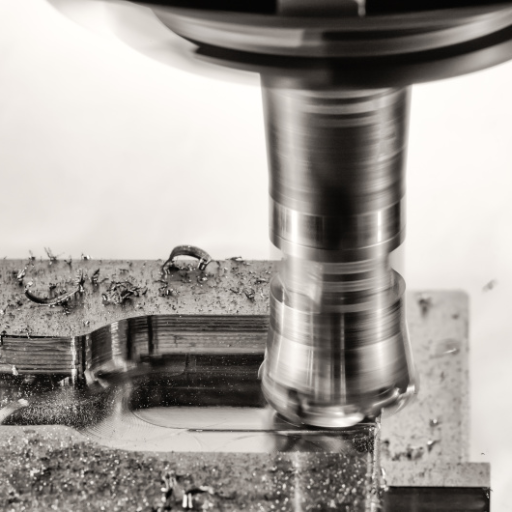
Comparisons with Additive Manufacturing
Metal machining and additive manufacturing (AM) have different approaches and results. Machining is a subtractive process that involves removing material from a solid block to achieve the desired shape, which gives it high accuracy and finishes. It excels in producing narrow tolerances and parts which are highly intricate. Conversely, additive manufacturing such as 3D printing fabricates objects using metal powders or filaments by building layers upon layers. The AM technique provides more design freedom and allows for complex geometries not possible with traditional machining methods or that would be too costly to produce. However, to obtain similar surface quality and tolerances, secondary post-processing treatments are often necessary. To summarize, conventional geometries requiring precision may be best machined while innovative designs can be rapidly prototyped using AM.
Contrasting with Forming and Casting
The fundamental principles underlying machining, as well as forming or casting, should always be acknowledged when comparing them. In forming processes, the material reshapes without any removal through means like stamping, bending or rolling typically. Such processes can make components having specific mechanical properties on account of work hardening but could be hampered by ductility of material being used.
On the other hand molding refers to pouring melted metal into a pattern where it cools down and solidifies into the desired shape. This technique is effective at generating intricate shapes or huge components but possibly introduces defects like porosities that necessitate extensive finishing in order to satisfy tight tolerances.
In contrast to this method of directly removing materials from a work piece so as to attain very high precision and minute details thereby making it ideal for creating parts with tight tolerances requiring smooth finishes; forming/casting are preferable for large-scale production having complex or large geometries whereas applications needing exact dimensions & high-quality surface finishes will benefit from machineability only leading towards prior art decision according to El Ghannam et al., (2014).
Subtractive vs. Additive Processes
Comparison of subtractive and additive processes reveals a number of differences that influence the choice of technique based on application requirements.
Subtractive Processes:
- Meaning: The process involves removal of material from the workpiece to form the shape needed, then cutting, milling, drilling or grinding.
- Accuracy: It can reach high levels of accuracy and tight tolerances typically within ±0.001 inches.
- Surface Finish: It is able to produce smooth surfaces with Ra as low as 0.4 µm.
- Material Removal Rate (MRR): rates vary depending on tool and material but it is generally measured in cubic inches per minute (in³/min).
- Waste: Substantial amounts of material waste are produced due to this method which may be expensive and difficult for the environment.
Additive Processes:
- Meaning: Objects are built layer by layer from digital models usually through such 3D printing techniques like Fused Deposition Modeling (FDM), Stereolithography (SLA), or Selective Laser Sintering (SLS).
- Precision: It is typically not as precise as subtractive methods with tolerances often ranging between ±0.005 – ±0.010 inches.
- Surface Finish: For smooth finishes post-processing may be necessary thus initial Ra values would always range around 5-10 µm according to the method used.
- Build Rate: Depends on both part size and thickness; rates can substantially differ from a few cubic inches per hour to several cubic inches per hour for more advanced systems.
- Waste: Little amount of materials goes into waste during this process because it has excellent material usage efficiency; hence, potential overall material costs reductions may occur
To summarize, subtractive processes are suitable when high precision and good surface finish are required while additive processes work best for unconventional designs, quick prototyping…
Reference sources
1. Online Article: “A Comprehensive Guide to Metal Machining Processes” – ThomasNet
- Source: ThomasNet
- Summary/Annotation: This article from ThomasNet offers a detailed overview of various metal machining processes, including turning, milling, drilling, and grinding. It explains each process step-by-step, outlining the tools and techniques involved. The article also discusses the different types of metals that can be machined and the specific applications for each process. ThomasNet is a well-known platform in the manufacturing industry, providing accurate and credible information that is highly relevant for readers looking to understand metal machining.
2. Academic Journal: “Advances in Metal Machining Processes: A Review” – International Journal of Machine Tools and Manufacture
- Source: International Journal of Machine Tools and Manufacture
- Summary/Annotation: This peer-reviewed paper published in the International Journal of Machine Tools and Manufacture reviews recent advances in metal machining processes. It covers innovations in cutting tools, cooling techniques, and automation. The paper provides experimental data and analyses to highlight improvements in efficiency, precision, and sustainability in metal machining. As an academic source, this journal offers high credibility and depth, making it essential for readers seeking rigorous, technical insights into the latest developments in metal machining.
3. Manufacturer Website: “Metal Machining Solutions and Services” – Sandvik Coromant
- Source: Sandvik Coromant
- Summary/Annotation: Sandvik Coromant, a leading manufacturer in the metal cutting industry, features extensive resources on their website about metal machining solutions and services. The site includes technical guides, product information, case studies, and best practices for various machining processes. It also provides insights into the latest tooling innovations and machining strategies to improve productivity and quality. Given Sandvik Coromant’s reputation and expertise, this source is highly credible and offers practical, hands-on information for users interested in metal machining.
Frequently Asked Questions (FAQs)
Q: What is machining metal?
A: Machining metal refers to the process of reshaping a blank into the desired shape by cutting away material from the workpiece. This may involve such operations as cutting, grinding, drilling and turning among others in order to produce various metallic products.
Q: Which machine tool is used primarily within a machine shop for machining metal?
A: The main machine tool employed in a machine shop is called a lathe. Various metals can be machined using this device by rotating the workpiece against a sharp cutting tool which removes metal thereby giving shape to an object.
Q: In relation to machining metal what does CNC milling imply?
A: CNC milling is a computer numerical control method applied for machining metallic materials. It uses computerized machines or machine tools that can perform precise and intricate cuts on metals in order to form different shapes.
Q: How does the saw fit into the machining process?
A: A saw is utilized for cutting metal during machining. It belongs to many types of these tools which are used to eliminate excessive amounts of metals from workpieces until desired shapes are achieved.
Q: Why is grinding important in machining metal?
A: Grinding plays an essential role in metalworking as it creates smoother finishes than those achieved through other means. Additionally, this technique allows for removal of minute quantities of materials while refining surfaces produced during machining parts.
Q: What does a machinist do in a machine shop?
A: In order to manufacture metal products, a machinist has to operate different machines. He or she is skilled at working with such devices as lathes, drills, mills etc., which are used in subtractive manufacturing that cuts off some material from raw materials thereby resulting into finished parts.
Q: What are turning tools and how they are used for machining metal?
A: Turning tools refer to cutting tools employed during the process of turning or milling metal on lathes; they remove material from rotating workpieces so as create cylindrical shapes and other geometries in raw metallic substances.
Q: Why is the cutting edge important in machining?
A: The cutting edge is that part of a tool used for machining that directly touches the work piece being acted upon. This area helps to efficiently shave off metals while giving them desired shapes accurately.
Q: Can metal be machined using CNC (computer numerical control)?
A: Yes, machining with computer numerical control (CNC) systems is very common when working on metals. For example, CNC milling provides high accuracy levels required for shaping metallic parts.
Q: Which raw materials can be turned into metal products through machining?
A: It’s possible to machine various types of raw material into metal products including different alloys. These materials are chosen based on their properties vis-à-vis final machined part requirements.




